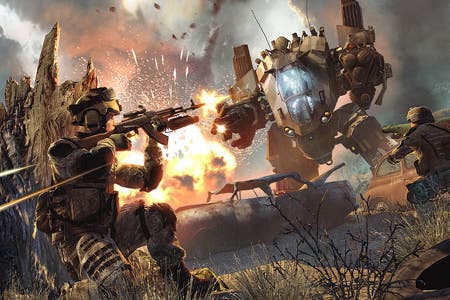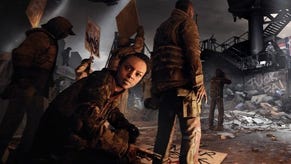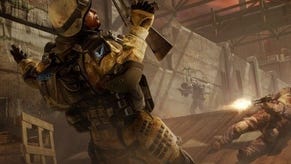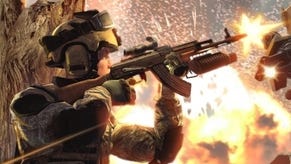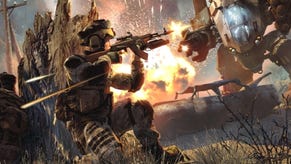Digital Foundry vs. Warface
Crytek promises AAA production values in free-to-play games. We take a look at its first offering.
One of the biggest shocks of the year is Crytek's announcement that it is to shift development away from traditional AAA retail games, instead embracing the emerging free-to-play market.
"As we were developing console games we knew, very clearly, that the future is online and free-to-play," Crytek mastermind Cevat Yerli told Videogamer.
"Right now we are in the transitional phase of our company, transitioning from packaged goods games into an entirely free-to-play experience. What this entails is that our future, all the new games that we're working on, as well new projects, new platforms and technologies, are designed around free-to-play and online, with the highest quality development."
It's a remarkable (though reversible) decision, swiftly followed by the news that its first F2P title - Warface - will be coming to Western markets after an initial release in Russia that has already attracted 2m registered users.
"As is evident in Warface, our approach is to ensure the best quality, console game quality. That implies budgets of between $10m to $30m - so no compromise there - but at the price-point of $0 entry," says Yerli.
"I think this is a new breed of games that has to happen to change the landscape, and be the most gamer-friendly business model."
It's a bold aspiration - to bring state-of-the-art production values and console-level investment into a release where there is no monetary barrier to entry, where the game has to survive based on optional subscriptions and micro-transactions. Cevat Yerli also talks about the current model of premium services and DLC "milking customers to death", and here the challenge facing Crytek is even more pronounced: it has to offer value to players who've invested real money into the game without ruining the experience for the more financially challenged members of the community.
"Crytek faces an interesting challenge with Warface - its engine boasts some of the best high-end technology available, but F2P games need to run on as wide a range of PCs as possible, including low-spec systems."
With no specific Western release date announced yet, we were curious as to how successful Crytek has been with its initial foray into F2P - but clearly getting access to Warface is an issue. Playing the game outside of its Russian base of operations is challenging: it's no problem to install the code, but the combination of no in-game English language support plus what we think is an IP lock-out makes playing the game impossible, while VPN access via a Russian server gets you into the game but with a poor quality of service. No problem: Digital Foundry played the game in Moscow, on a fully armed and operational 300mbps connection for the best possible experience.
First impressions are mostly positive, with Warface coming across very much as a console-quality multiplayer game, with robust support for both co-op and competitive modes. The former (PvE, to adopt the lingo) sees gamers working as a team, moving through a mostly linear level, taking out enemy troops and occasionally engaging in pitched battles with heavily-armoured boss characters. Sub-missions see you defending strategic points on the map, acquiring codes or blowing up scenery. A full class system sees assault troopers carry the most powerful weapons, with the ability to generate ammo for comrades while shotgun-wielding medics patch up the wounded. Engineers restore armour, while the role of the sniper is self-evident.
The PvP mode is mostly standard stuff: Deathmatch and Team Deathmatch modes are bolstered with King of the Hill and "Plant a Bomb" game variations, along with a Capture the Flag variant that sees a briefcase dropped into the map that players need to track down and return to base. There's even a mode equivalent to Battlefield 3's Rush, where players move from point to point through the map. All told then, that's a fairly comprehensive list of options, equivalent to the standard AAA multiplayer mode - no cutbacks or compromises here. There are currently 12 PvP maps, and a rolling roster of around six PvE levels, with three different ones open each day.
"First impressions are positive - visual detail is a step beyond most console games, co-op and competitive modes are supported, and there's a wealth of game modes and levels to sample - for free."
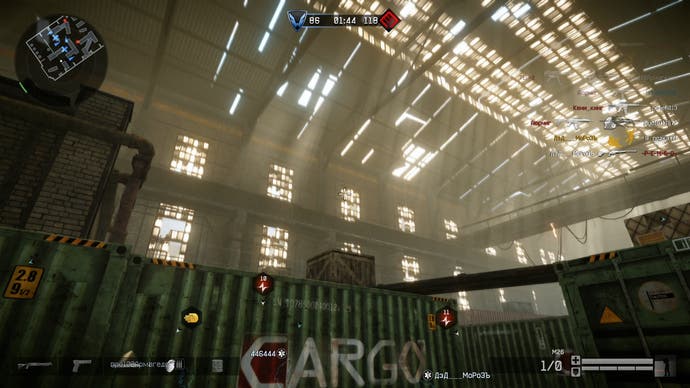
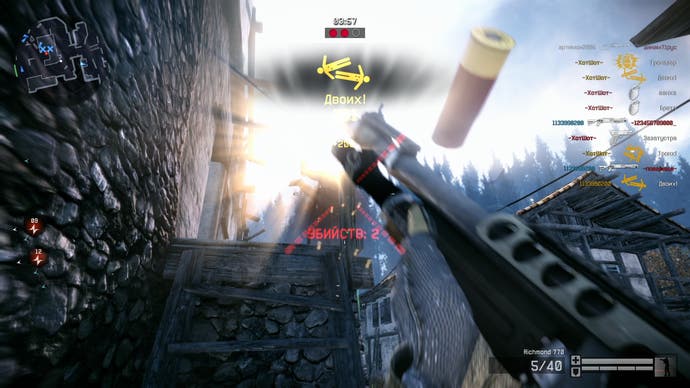
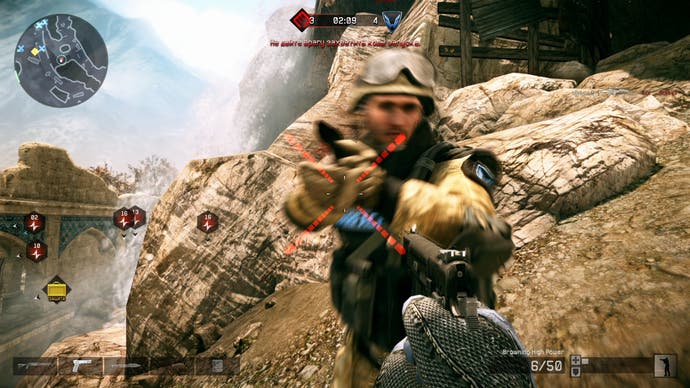
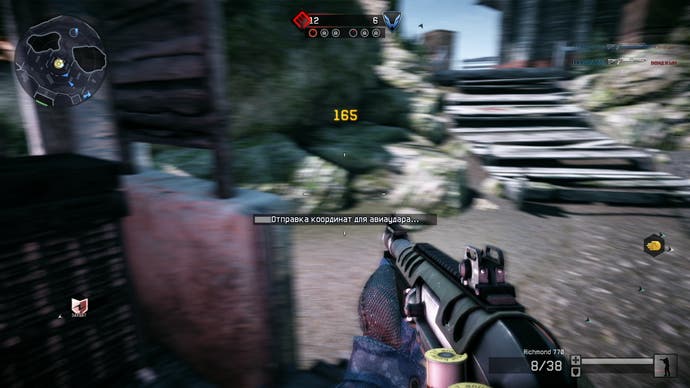
How CryEngine 3 Performs in a Free To Play Game
Bearing in mind that this is a CryEngine 3 title, we were intrigued to see how the engine is deployed in Warface - after all, an F2P title by necessity needs to appeal to as many PC owners as possible, meaning that the tech needs to accommodate weaker machines as well as the more powerful. To that end, there's a fairly simple graphical presets screen that allows players to adjust texture, shadow, shader and object detail levels, along with the quality of the physics simulation. Low, medium and high settings are accommodated, and as the shots on the page demonstrate, the differences are easily noticeable. Anti-aliasing, v-sync and motion blur are also tweakable.
Ramping up everything to the max, Warface is an interesting experience - texture quality, object detail and effects work ramp up nicely when played in 1080p resolution, more so than on many of the PC console ports we've played - while the levels lack character in general. There's clearly no shortage of detail. However, generally speaking things are rather static with very little in the way of environmental animation. This is most noticeable with vegetation, which looks stiff and unnatural - somewhat surprising bearing in mind Crytek's standards-setting work here in Crysis. Animation in general - especially on the characters - also seems lacking compared to the latest Call of Duty and Battlefield titles, but is decent enough.
On top of that, the overall impression we get is that Warface's stages are using mostly pre-baked light and shadow - fine as far as it goes - and it's clear that the artists have skillfully used CryEngine 3's colour-grading tools for tweaking the look of the stages. The static look of the lighting in general is a little disappointing overall though. That said, the juxtaposition of bright light from the sky in combination with deep black shadows suggests that HDR rendering is in effect, and the same scene also demonstrates that light-shafts have also been implemented. An ambient occlusion implementation also serves to give an extra layer of depth to the scene.
We seem to be looking at COD-style levels of in-game physics overall - environments are essentially invulnerable to weapons fire in Warface, with breakable scenery limited to incidental objects. More positively, ragdoll physics on the characters are fun to play with - especially when blowing away opponents from close-range with a shotgun. Where the game scores highly is in its use of post-processing effects - motion blur in particular looks as impressive as it did in Crysis 2, particle effects work is used sparingly but effectively, while bullet ricochets from the ground and scenery look good, accompanied by small plumes of smoke.
"Warface is heavily inspired by COD-style 'twitch' FPS gameplay and while it lacks much in the way of style or invention, the CryEngine 3 technology gives the appearance of a game punching above its weight."
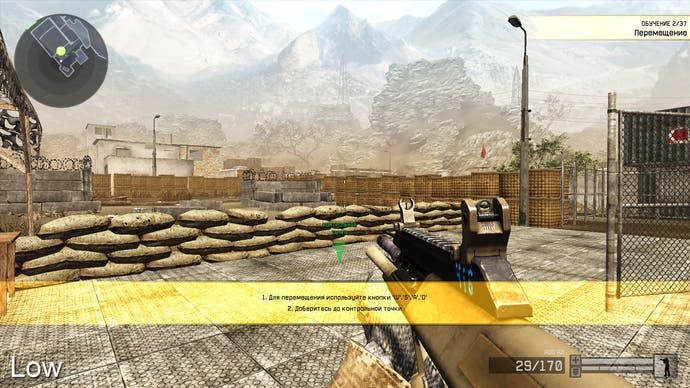




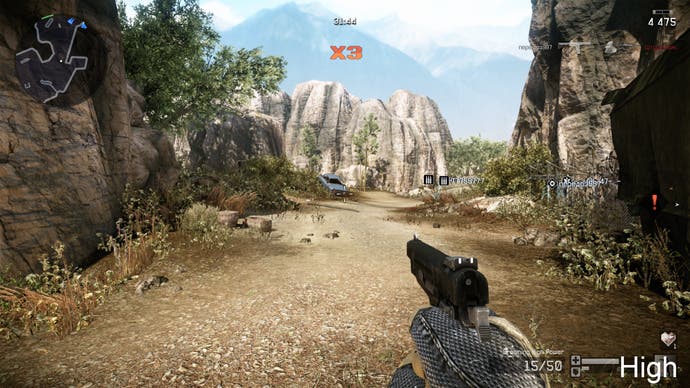
Overall conclusions? Warface comes across as a game heavily inspired by the Call of Duty "twitch" school of gameplay and while tech and visuals aren't quite at true AAA quality, the game gives the appearance of punching over its weight - mostly due to the CryEngine 3 infrastructure that powers it. The optimisation work Crytek carried out on CE3 pays off here - Warface plays very nicely even on mediocre PC hardware. At 1366x768 with max settings engaged on a very complex map, frame-rates rate between 45 to 60FPS on a dual-core PC with an aged GeForce GTS 250 graphics card. Dial back the settings and we're sure that even integrated graphics could pull this one off.
Curiously there are definite diminishing returns when moving up to faster hardware - on a GTX 680 system backed by six-core i7 CPU power, we saw performance between 70-120FPS with v-sync enabled when playing on a 120Hz screen. V-sync limits the top-end, but the fact that frame-rate dips to that lower level on a monstrous machine like this is unexpected and a little weird.
The F2P Factor: How Warface Makes Its Money
Gameplay-wise, Warface ticks most of the boxes you'd expect from an FPS shooter, but there is a general sense that the whole game is essentially of an "above average" quality, lacking in two distinct areas: firstly, visuals and gameplay are accomplished enough but there's never any real feeling that there's anything truly special about what you're seeing and experiencing. This is a game without wonder or spectacle and lacks an inventive edge - aside from the fact that it is free to play - to set it apart from the crowd. Warface is clearly trying to tap into the Call of Duty formula, but despite running on clearly superior rendering technology, the experience doesn't seem to be quite as thrilling overall.
The second element that feels lacking is the overall polish of the product. While the visuals work well, features like destruction and animation aren't best in class, pop-in is commonplace and it's not difficult to find yourself trapped in the scenery owing to dodgy collision detection. There's also a general sense that Crytek Kiev hasn't quite got to grips with the more subtle aspects of the FPS model - for example, there's no penalty for moving into a prone position, and you can continue firing as you dive down and get up again - it's the sort of thing that can be exploited, as you'll see in the PvP video at the top of this page. Also, as many of the maps feature relatively confined spaces, the shotgun becomes the weapon of choice for one-shot kills.
You may think that a lot of these elements are relatively minor and easy to tolerate factoring in that Warface is free to play and state-of-the-art in many respects - and that's fair enough. Clearly you do get a lot of game for your £0 investment, but the fact is that Warface has to earn its keep, meaning that the gameplay balance is skewed towards the extraction of your hard-earned wonga one way or another.
"This is a game without wonder or spectacle, that lacks an inventive edge - aside from the fact that it is free to play. In other areas, there's a sense that it's missing the polish required to compete with the best first-person shooters."

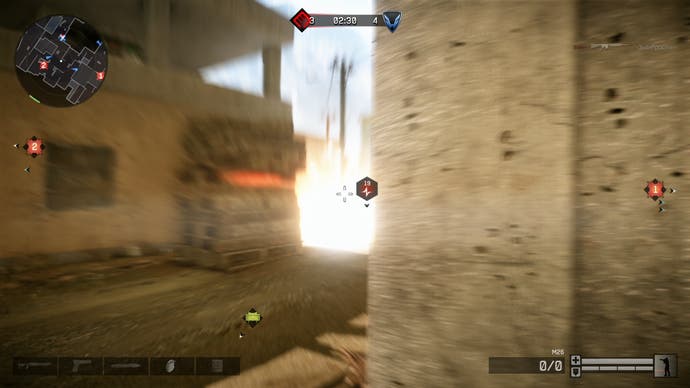

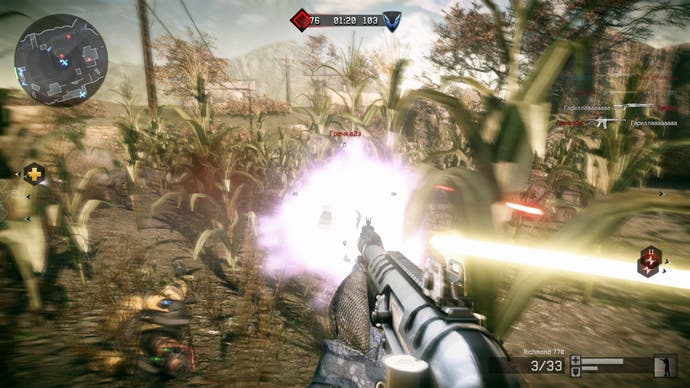
Part one of this formula is the premium subscription, which costs the equivalent of $5/£3.20 a month - this may change when the game gets its Western debut. This automatically gives you a 75 per cent boost to the XP and in-game credits you amass, and it transforms an infuriatingly slow level of progression into something best described as 'tolerable'. To put it into perspective, after our first eight hours of play, we'd unlocked two primary weapon upgrades but we simply didn't have the in-game cash to buy them - if you're serious about Warface, you're going to need that premium-level boost that only the subscription offers.
You can't get around this by injecting real-world cash into the game either. Instead, your actual money is used to buy "Kredits" which allow you to rent upgrades like enhanced weapons (for seven, 30 or 90 days depending on how much cash you sink in). A curious aspect is that these weapons aren't actually hugely more powerful than the standard guns, on paper at least - improvements to stats like damage and range are usually in the 10 per cent region, but often with drawbacks too (lower accuracy when firing from the hip, for example). However, other rentable equipment has clear gameplay advantages: helmets can allow you to survive headshots or they can stop you being blinded by flashbangs, while boots allow you to run faster.
There's nothing like COD-style Killstreaks in Warface but there are special weapons unlocked by a third currency: crowns. These are accrued in the co-op mode, but only if you get a high score within the top 10,000 players. Obviously this is skill-based, but breaking into that table and consistently earning crowns requires a lot of time, and clearly the strategic use of the rentable equipment will boost your earning power. Crown weapons can be used in both PvE and PvP modes, and they are supremely powerful - offering a good 2.5x boost in all categories over the standard weapons. They're useable in all gameplay variations, effectively making a competent player into an omnipotent one while the weapon lasts - crown weapons are hired for one or seven days.
"Warface isn't available to Western audiences at the moment - what you're seeing on this page is effectively a 1.0 version and there could be extensive tweaks deployed before it rolls out into new markets."
Warface: The Digital Foundry Verdict
Of course, changes to the game balance set-up could be implemented in the future, perhaps before you even get to play the game. Warface isn't available to Western audiences at the moment - what you're seeing on this page is effectively a 1.0 version and there could be extensive tweaks deployed before it rolls out into new markets. Crytek is already working on integrating the game into its own GFACE social networking system for example, and having already received one major update in its current guise, it stands to reason that the game may be further iterated before we get to play it.
But in the here and now, Warface is an intriguing curiosity: a state-of-the-art engine deliberately run at less than optimal settings in order to accommodate a broad church of PC owners, missing many of the key features we find in the latest AAA console shooters, yet still looking rather decent overall. While the "pay to progress" subscription model rankles, the fact is that with astute weapon choices, you can dip into the game with zero investment and have a fun time. Only rarely did we ever feel that a combat scenario may have been unfairly skewed towards a premium player and the crown weapons seem to be rare enough that the game isn't broken because of them. Indeed, we get the impression that they're serious tools for serious players and saved for showcase events rather than being "wasted" on gunning down newbies with gay abandon.
So with all of this in mind, is Crytek's first foray into F2P gaming a success? Warface comes across as a solid game, but not a spectacular one. In that sense we feel some disappointment, but only really because this is a Crytek release, with all the expectations the brand brings with it. This is clearly a decent release worth spending some time with, but it doesn't seem to quite fit with the "Maximum Game" ethos on which the studio made its name.
That said, this is a first-time offering from Crytek's Kiev studio (who seem to have spent much of their previous efforts working on engine projects) and the full might of the company's established staff has yet to be deployed on an F2P project. In a world where Crysis 2 runs nicely on integrated graphics, it's clear that Crytek has the tools and the talent to truly make a difference in the emerging F2P market. The Crysis team on an F2P game? We'd love to see that...
